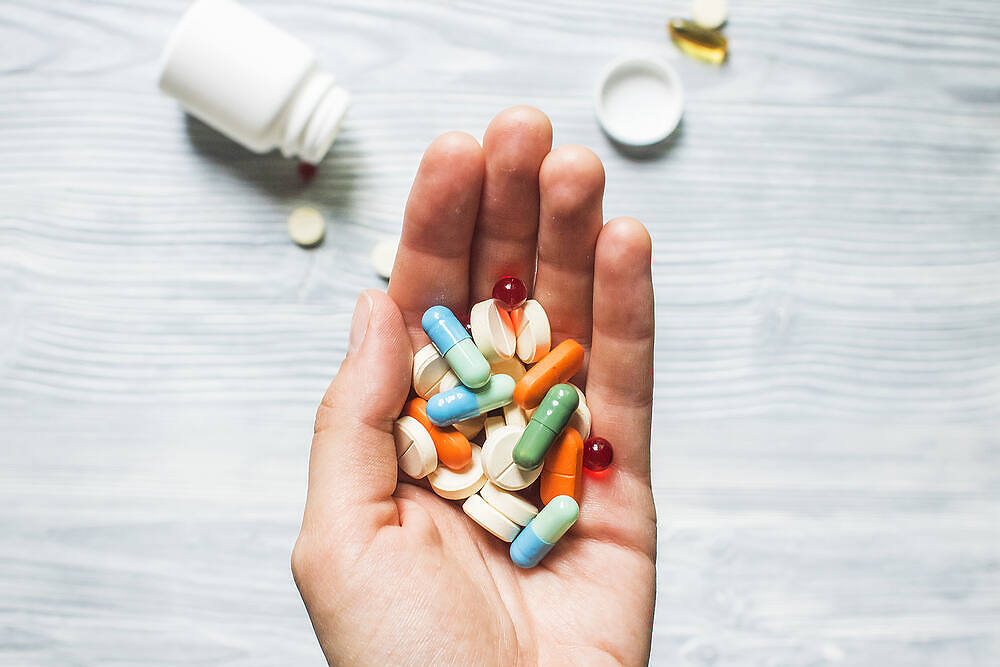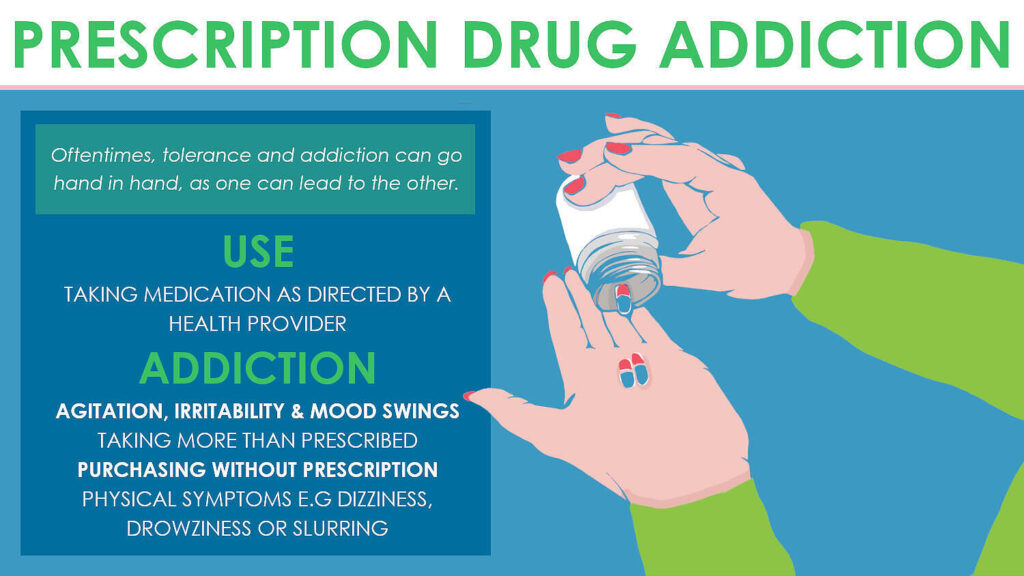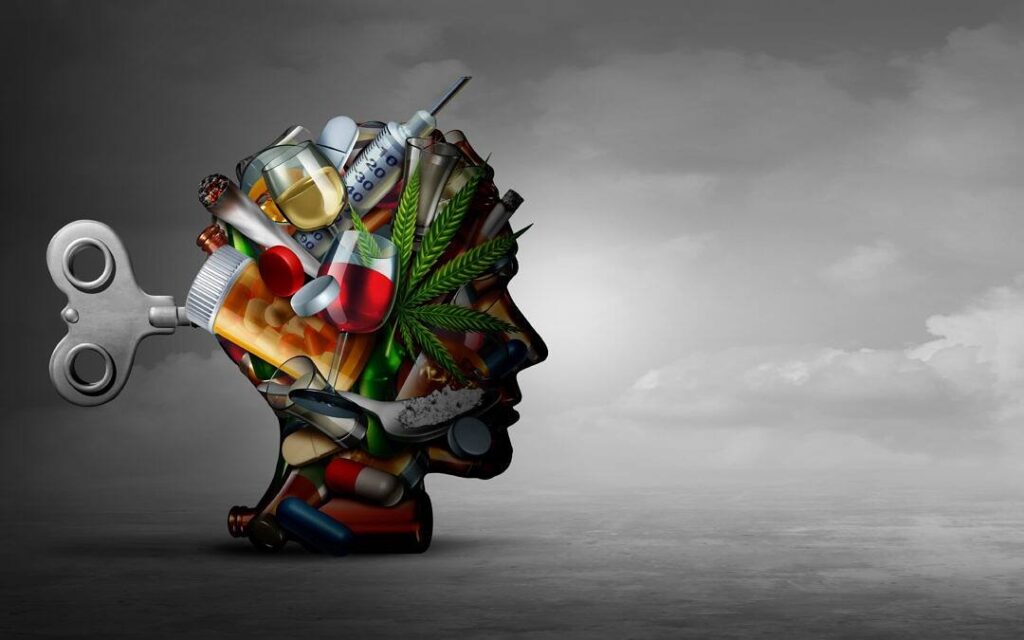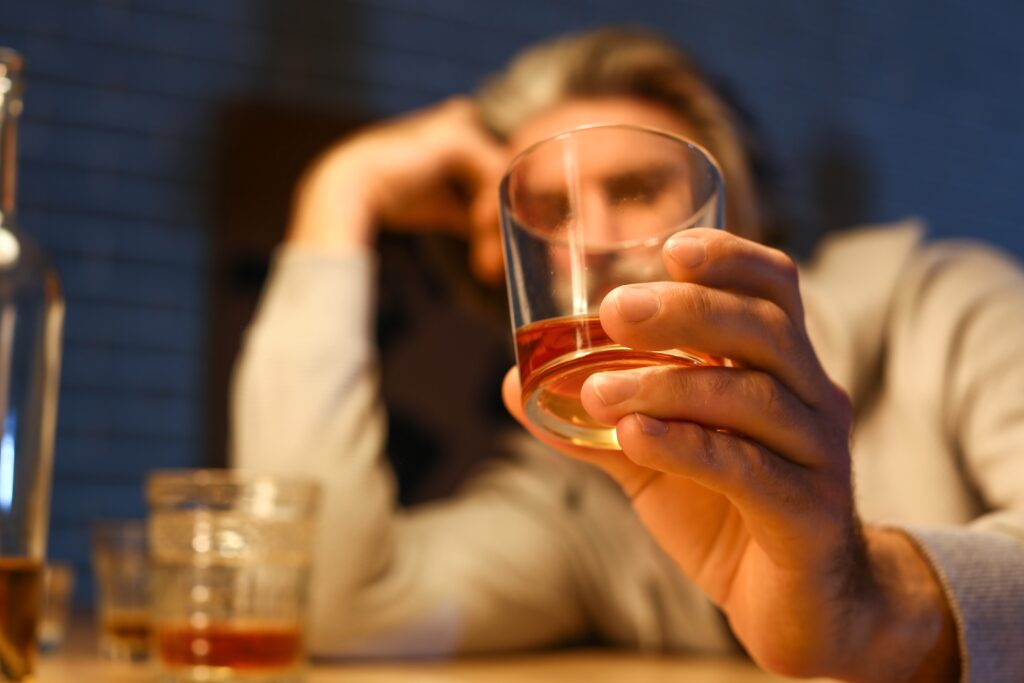Prescription drug addiction is a massive issue in communities worldwide. That said, there’s a significant issue with these addictions in the UK that deserves attention.
There are many public policies and cultural causes for the concern of prescription drug addiction in the UK.
We’re going to take a look at the most common prescription drug addictions today, exploring a number of important questions. We’ll answer the question “why are prescription drugs addictive?”, in addition to a number of other concerns about addiction to medication.
You’ll also get a clear idea about each of the most common categories of prescription drugs that contribute to the issue and what it is that they do in the body to produce dependence.
Let’s look at the overuse of prescription drugs that cause prescription drug addiction.

Drug Abuse in the United Kingdom
While general drug abuse in the United Kingdom has remained stable over the last decade, prescription drug abuse has grown and taken up a larger portion of the instances of drug abuse nationwide.
For example, the UK has developed to have the highest percentage of individuals using opioids.
Opioids have a significant role in the drug-related deaths of every one of the countries in the United Kingdom. Generally, the UK stats for prescription painkillers are higher than other nations.
“Opioids are highly addictive and have been known to cause prescription drug addiction going back as far as the Second World War.”
The other most commonly abused prescription drugs in the United Kingdom are Benzodiazepines, also called “benzos.” The number of deaths that benzos contribute to is on the rise as well.
While benzos aren’t often a direct cause of death, they’re abused in conjunction with opioids in a lot of cases, and the combination of the two puts the individual at a high risk of overdose.
Opioids, cocaine, benzos, MDMA, and ketamine are some of the most abused drugs at the moment. It should also be noted that prescription stimulant medications are also abused at high rates. We’ll take a look at those today.
To keep yourself out of risk for abusing these drugs, you must understand them, their mechanism of action, and their potential for abuse. It’s easy to think that a drug, just because it’s prescribed to you, is always safe.
This is not the case, as you’ll see in this article. Let’s explore three prescription drug categories that contribute to the bulk of abuse.
We’ll look at all three categories and then discuss how these substances produce addictions.

Opioid Abuse
Opioids are a class of drugs that are commonly prescribed as painkillers.
Their effect comes on for several reasons that are important to understand when you’re looking at these drugs in terms of addiction. Opioids relieve the experience of pain by operating on the central nervous system.
Different types of prescription opioids include
The chemical structure of opioids works on the body’s receptors in such a way that the central nervous system slows down. When that happens, the signals sent to and from different body parts are inhibited, significantly affecting the user’s experience.
In terms of pain, the messages you get from various body parts are dulled or eliminated. So, you might get a rush of pain from your knee after surgery.
The opioid enters the body, dissolves, works through the circulatory system, and is distributed throughout it. After some time, the chemical is distributed throughout the nervous system, blocking pain signals from all over the body.
The messages running from your knee to your brain will be muted at a high enough dose. You won’t experience pain, and a rush of pleasure replaces the pain signals. It is this rush of pleasure that is one of the main contributors to prescription drug addiction to opioids.
Safe And Effective Use
It’s important to recognize that there is a way to take these drugs that will be effective and important in treating your ailment. Take surgery, for example.
The intense pain of surgery requires a strong sedative drug to relieve the pain. If the individual doesn’t get access to an opioid, they might have to undergo intense agony while they recover from their operation.
A doctor can prescribe these drugs in the appropriate amount that will ease the pain and put the individual at the smallest risk for addiction. The difficult thing is that some pain overrides the drug’s action and produces too much difficulty for the user.
If they’re at home and suffering, they might take a little more to ease the pain. This is one of the biggest pitfalls of prescription drug addiction. They will succeed at easing the pain, but they might not recognize the risk they’re putting themselves in when they do so.
Even individuals who use prescription opioids as prescribed might find themselves addicted when their treatment ends. Prescription drug addiction can be deceptive; unlike illegal street drugs, you are lulled into a sense of security as a doctor gave them to you originally.
Those instances are mitigated by the intervention of doctors and the adjustment of the medication. Some people might have to wean off the medication to avoid withdrawals and other negative effects.
All of that is to say that individuals should use opioids as prescribed by doctors and in no other way. If dependence does arise, doctors can help to mitigate any damage and adjust the dosage.
Painkillers and Pleasure
One of the key reasons that prescription painkiller addiction is so common is that it operates on the dopamine function inside the body. Not only do they kill pain, but they also allow the release of massive amounts of pleasure.
“Dopamine is the chemical released when we complete a beneficial action or do something that contributes to our survival.”
The same goes for instances when we succeed or receive positive regard from others. It operates in an area of the brain called the “Ventral Tegmental” area.
You can think of this as the brain’s “reward centre.” The release of dopamine provides animals with the essential motivation needed to survive. When you do something that is required to survive, you’re incentivized to do so again.
The experience of dopamine is very positive, and we’re incentivized to repeat behaviours that prompt the release of dopamine. Sex, eating, exercising, and other behaviours release this neurotransmitter daily.
If you look at humans purely chemically or mechanically, you could say that dopamine is the thing we live to get more of.
Commonly abused opiates like heroin, Xanax, morphine, or oxycodone all produce a massive rush of dopamine. The result is the psychological experience of immense pleasure and satisfaction.
On paper, it’s similar to the experience of winning a gold medal, witnessing your child’s birth, getting a promotion at work, or realizing your life’s ambition.
It’s an artificial experience, but the body doesn’t know any different. The ancient wiring in your body’s thirst for survival screams at you to keep doing whatever gets you that much dopamine.
Why Opioids Prompt Dopamine
It isn’t that there’s a lot of dopamine contained in opioids. Drugs like these don’t introduce all of the chemicals that you need to feel immense pleasure, and they bind to your receptors in a way that allows your neurotransmitters to run wild.
In a sober mind and body, chemicals that serve as dopamine inhibitors govern dopamine production.
“We couldn’t survive if we were bathing in an endless ocean of pleasure and bliss, so our bodies don’t allow us to do that.”
However, our bodies have the neurotransmitters to put our minds into that state. When our neurotransmitters are managed and released at the appropriate times, we live in a way that should lead to survival and reproduction.
When you introduce something that limits the inhibitors of dopamine, serotonin, norepinephrine, and other neurotransmitters, though, you get a very desirable and addictive experience.
Opioids do just that. They block out the thing blocking dopamine, allowing that chemical to run wild in your body and produce all of its pleasure.
It’s like there’s a superstar band walking through a crowd with their security team. The fans are all waiting their turn to see the stars, entering individually to get autographs.
Now, suddenly, the security team vanishes. A swarm of people floods the band and overwhelms all of the orders that existed before.
The security is the dopamine inhibitor, and the opioid is what makes that team vanish.
Benzodiazepine Addiction
Next in line, we have benzos.
These drugs are prescribed to treat anxiety, pain issues, and seizures. In most cases, though, the prescription of benzodiazepines comes as a result of anxiety disorders.
Benzos are known as depressants. They inhibit the function of the central nervous system just as opioids do, but they do so in a different way. The result is similar, though, especially as it pertains to the experience of psychological pain.
The nervous system is slowed down to inhibit the stress response, which contributes to experiences of anxiety. When our bodies experience unnecessary stress responses, there is a host of negative side effects that manifest in different ways.
There are also many different reasons that the stress response might be heightened. In any case, introducing benzos to the system will reduce the intensity of that experience and make the person feel calmer.
How Do Benzos Work?
Benzos tend to operate on a neurotransmitter called GABA. It relaxes us by inhibiting the stress response and allowing us to feel calm and relaxed.
A “runner’s high” often involves that feeling of calm and relaxation. This is because GABA, endorphins, and dopamine work together to produce the reward people look for after an intense run.
“GABA works to complete several other functions in the body as well. Benzos inhibit the GABA inhibitor, much like dopamine restrictions are lifted when a person takes opioids.”
GABA is allowed to run free, calming the individual and reducing the physical and psychological manifestations of stress and anxiety. Benzos produce a psychological sedative as well as a physical reduction in stress.
This is because the body distributes GABA receptors differently in its different parts. The receptors in the lower body might deal with the physical end of stress, while the receptors in the brain might act on the amygdala and frontal cortex.
When all of those receptors are plugged to let GABA flow, the result is a very pleasurable and anxiety-free experience. Different types of benzodiazepines include:
Stimulant Addictions
Stimulants are a class of medications that are prescribed for several ailments, with ADHD and hyperactivity as the most common. Some of the most abused prescription stimulants include:
- Adderall
- Concerta
- Ritalin
- Vyvanse Addiction
Many individuals who haven’t been prescribed these drugs take them to increase focus, produce euphoria, and stimulate themselves to increase the enjoyment of various activities.
Stimulants work by operating on several neurotransmitters and chemicals in the body. There’s some interaction with the flow of dopamine, which is why stimulants can produce a rush of euphoria or pleasure.
More important is the effect on chemicals that speed the central nervous system.
“One chemical, catecholamine, boosts the level of concentration and attention that a person experiences.”
This might also increase a person’s heart rate, raise blood pressure, and dilate the circulatory and respiratory systems. The result is a long-lasting experience of concentration, energy, decreased hunger, and amplified pleasure.
How Some Stimulants Treat ADHD
You might wonder how a person who experiences hyperactivity or ADHD would be helped by something that makes others even more energetic.
The benefit comes from the chemical Methylphenidate. It operates to block the reuptake of dopamine. Reuptake is the reabsorption of chemicals by receptors in the central nervous system.
The idea is that when a neurotransmitter is used, it is reabsorbed by the body and stored for later use. When you block reuptake, that neurotransmitter remains in the synapse, and more of that chemical enters that area, allowing the effect to continue.
One of the potential reasons that a person has ADHD is that their dopamine production and release are not in balance. A chemical that can adjust the flow of dopamine in the body might establish a normal level of dopamine for that individual.
Then, the body and mind will compensate, allowing the person to function closer to what is considered normal. This change happens over some time, and the drug is not meant to produce a one-off experience when it’s prescribed.
Types of Stimulants
There are a couple of types of stimulants that are often abused. The first is the class of stimulants that uses methylphenidate to block dopamine reuptake. The second class is a group called amphetamines.
The most common of these are Adderall and Vyvanse. The list of abused prescription drugs could go on, though.
These drugs release norepinephrine and dopamine into the system rather than preventing those chemicals from being reabsorbed. That said, a small function of amphetamines is to block reuptake marginally.
Both of these drugs pose similar levels of risk for addiction and substance abuse.
Prescription Drug Addiction
Now that you know a little bit about the most common prescription drugs that are abused, it’s time to look at why they’re so addictive.
Further, the information below will help you understand the warning signs of prescription drug abuse.
While each class of drug poses different reasons for addiction, the general process is similar across all of the classes. On the one hand, it’s easy to understand why a person would want to reproduce the experience of each drug.
Part of prescription drug addiction and all dependence is the simple fact that drugs are pleasurable, and they take us away from the pain and stress of normal life. A person might even feel like they can take on normal life better when they’re high on a drug.
Many people in college or at difficult jobs abuse amphetamines and other stimulants to be more productive, for example. In the case of opioids and benzodiazepines, the person reduces the anxiety and stress of life.
This is something we can all understand. There might be a difficult mental illness that requires some relief, or the individual might have very hard life experiences that are difficult to handle. Some people might stumble into drug use and develop an addiction because they enjoy the experience.
There are plenty of things in life that we find enjoyable but don’t get addicted to, though. Eating a tasty dessert is enjoyable, but not many people abuse food in a way that requires professional help.
Effects of Prescription Drugs
Over time, people who are addicted to pills get used to the presence of the drug in the system. The experience of the drug is less enjoyable, and all of the effects are less significant over time.
This is called tolerance.
More use of a particular drug breeds a higher tolerance to that drug, requiring more of the substance to produce the desired effect. In a lot of cases, drug abuse prompts the individual to take a dosage that would otherwise harm them.
The dose you take when you have a massive tolerance is often enough to be fatal in someone who has never taken that drug. When tolerance is high, the absence of the drug can produce withdrawal, which is one of the biggest painkiller addiction symptoms.
A withdrawal is a sort of craving that your body has when it has adjusted to the presence of a particular drug. Drug abuse creates a situation where the drug of choice is needed to maintain a “normal” environment in the body. The body notices that something is off, screaming at you to get more of the thing it needs.
It’s similar to the feeling of hunger. Your body knows you need food to survive, and it demands that you eat by producing the feeling of hunger. In the case of prescription drug addiction, though, your body is tricked into thinking it needs the thing that’s hurting you.
Symptoms of Withdrawal
Depending on the drug you abuse, the withdrawals will be different. Opioid withdrawals, for example, can be fatal if they’re not monitored.
Other withdrawals might not be as likely to kill you, but that doesn’t mean they aren’t intense.
You might feel sick, nauseous, delirious, intense pain, depressed, anxious, paranoid, and everything in between. All the while, your body and mind push you toward finding and using the drug.
Withdrawal is a big part of addiction. Most people experiencing substance abuse know that they’re hurting themselves and wish that they could stop. The difficulty comes with how awful the feeling of withdrawal is.
It has mental and physical manifestations, and a lot of those experiences make it easy to justify the further use of the drug.
Help Getting Off Prescription Drugs
The beautiful thing is that you aren’t alone if you’re trying to quit using these drugs. If you’re showing signs of prescription drug addiction, there are options for help.
Recovery centres are available to work through the process of escaping prescription drug addiction for good. Doing so on your own can be difficult, even impossible.
As we mentioned, the symptoms of withdrawal can be enough to end a person’s life. You must be in the presence of professionals as you go through this process.
Professional help makes the experience a lot less painful, and it gives you the tools you need to understand your addiction and prevent it from resurfacing. You might even need psychological support to understand what it was that drove you toward drug abuse in the first place, and recovery centres can offer that support.
There are options for individuals experiencing all kinds of addiction. No matter how severe your prescription drug abuse might be, there’s no reason that you can’t turn it around with the help of professionals.
It can be difficult to recognize the signs of addiction as well. Recognizing and acknowledging the reality of the situation is the first step, and recovery is the second.
We’re here to help you notice the signs of being addicted to pain pills so that you can get help getting off prescription drugs.
Interested In Learning More About Prescription Drug Abuse?
If you’re worried about prescription drug addiction, you must look at your options for help. Getting in touch with a professional recovery centre is a big step in the right direction.
We’re here to help you get all of the information you need. To learn more about our inpatient prescription drug detoxes and rehab programmes, please call and speak to one of our friendly addiction treatment experts today.
Contact us to set up a consultation and learn more about commonly abused opiates, prescribed drugs, signs of painkiller abuse, signs of pill dependency, painkiller addiction UK, and much more.



